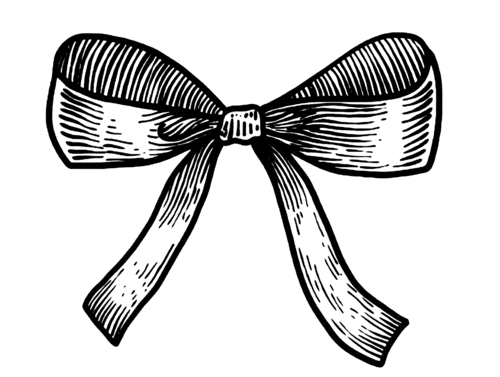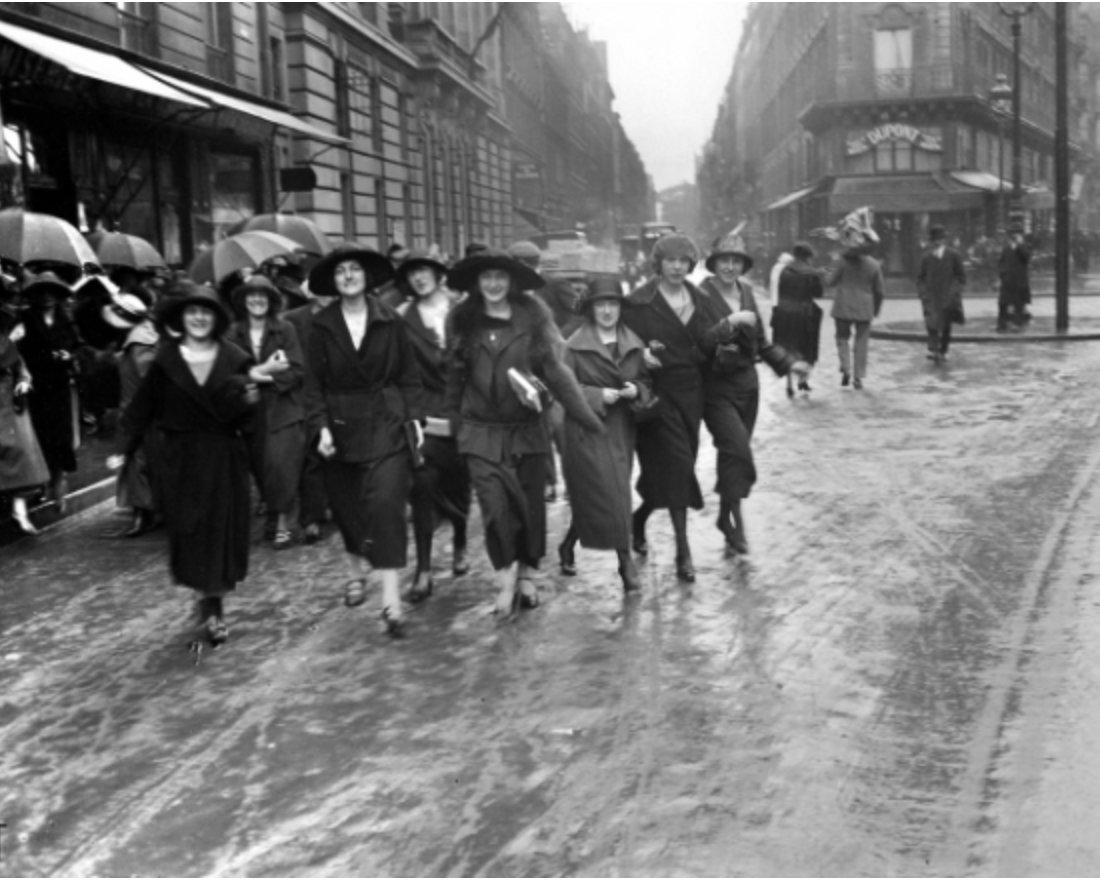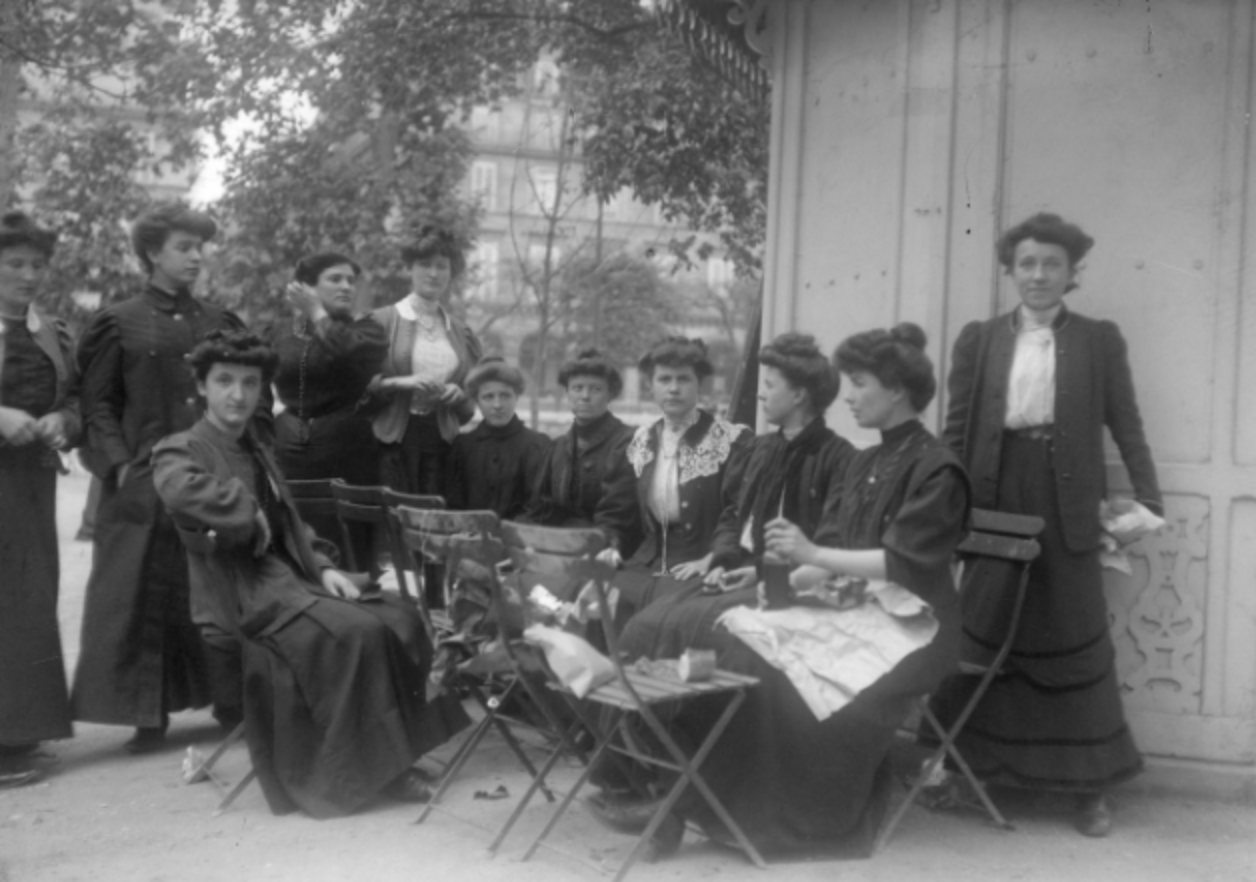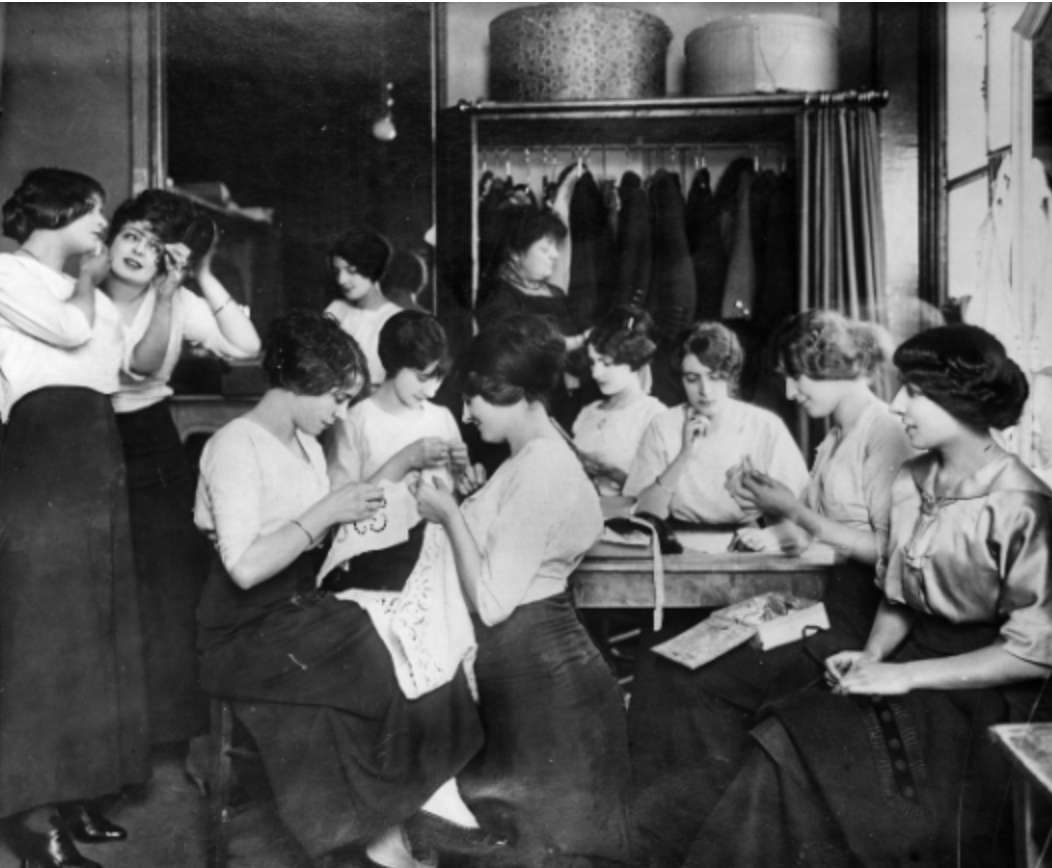The Midinettes
On an unremarkable corner of Le Sentier, the fashion district of Paris since the 19th century, there is a statue of of St. Catherine, the patron saint of the Midinettes. In the Haute Couture maisons and ateliers of Paris she is still celebrated on the 25th of November when single women who are 25 years old are given a hat decorated with green and yellow by their colleagues in the hopes of a prompt marriage.
The term Midinette first appeared during the Belle Époque era and it referred to the young women who worked in the luxury fashion houses of Paris. They had their lunch outside the home at midday, often bringing their packed lunches to the Tuileries Gardens or saving up their wages to dine in the surrounding restaurants.
When the Englishman Charles Frederick Worth opened his fashion design house on Rue de la Paix in 1858 it became the epicentre of Haute Couture Fashion. Worth is known as the Father of Haute Couture and he enjoyed enormous fame and success during his career, dressing French royalty, aristocracy, celebrities and countless discerning clients from Europe and America. In order to answer the insatiable demand for his beautiful designs he organised his fashion house into a system of ateliers with specialised seamstresses, milliners and embroiderers.
The Midinettes were mostly from Montmartre and Belleville, the working class areas of Paris and they began their training at 12 or 13 years of age. According to a labour inspection survey in 1902 there were 172,000 needleworkers in Paris alone, the majority female. Surrounded by exquisite luxury fashions and materials all day, they were admired for their own stylish appearance using their savoir-faire to accentuate their outfits despite their limited means.
There were serious concerns for the Midinettes amongst the social reformers of the day. They were exposed to dangers in the workplace such as the temptations of luxurious items and lifestyles they could neither afford nor access. The most serious danger for the Midinettes was encountered in the restaurants they frequented due to their susceptibility to falling in love very quickly and their ambitions of marrying above their social class which left them exposed to moral temptation. And so social reformers made efforts to save the virtue of Parisienne Midinettes, Telephone Operators and Administration Employees by opening several female-only working-class restaurants in the area to ensure an affordable meal free of added temptations.
In 1917, the Midinettes took to the streets of Paris, 20,000 of them marching from the Champs-Élysées along the Grand Boulevard. Forced to work a half day on Saturdays, they were protesting for a 5 day week like the English model and it was promptly granted by the Chambre Syndicale de la Couture.
If you would like to find out more about the Midinettes you can sign up for Textile Tales from Paris, a series of beautifully illustrated and lovingly researched lectures that reveal fascinating stories abut how luxury textiles and fashion became woven into the fabric of Paris.
Further Reading
https://www.cairn.info/revue-histoire-economie-et-societe-2013-3-page-61.htm







